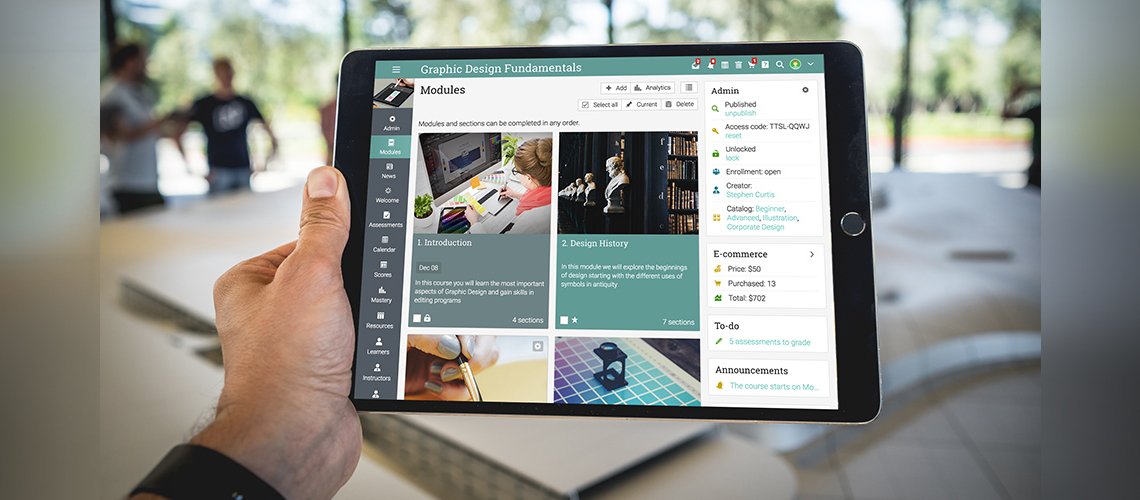E-learning has established itself as the number one method of delivering knowledge and competencies development in the modern organization. It has proved very effective in boosting employee engagement and overall workplace efficiency. The fact that this approach to learning allows for continuous updates in order to keep up with the latest technologies and with all the rapid changes in market demands makes it the perfect solution for the modern business.
Most organizations have already adopted an LMS solution (some are even at their second or third version) and if initially they were all rather tool-oriented, they soon became task-oriented.
MATRIX White paper: Find out how a learning management system can enhance training and learning
The power of a good LMS lies in its capacity to empower learners, bring up engagement scores and make a positive change. However, in order for e-learning to remain successful in delivering optimal results, it needs to be designed and deployed keeping in mind a few essential aspects.
Business impact
All organizations have declared objectives and a more or less set timeline for achieving them. It’s obvious that the ultimate goal of any L&D program is to have a positive impact on business results. As with every other organizational undertaking, this too has to prove its usefulness either by calculating a return on investment or by another measure of business success.
Doing this is a little more challenging than it may seem at first glance because learning is ultimately an individual endeavor and quantifying results by a generalized scale may not be very efficient. Yet a good e-learning platform can be flexible enough to adapt to ever changing business needs in a customized manner.
Keeping up with learner needs and preferences by constantly incorporating the newest trends and technologies is also necessary in order to stay on top of employee development.
Read more: Top 5 e-learning trends for 2019
Impact on the learner
In order to make a difference at a macro level, learning has to first manage to drive change in every individual it addresses to. Tailoring courses to the real needs of the employees requires a thorough training needs analysis as well as in-depth knowledge or learner preferences when it comes to both content and means of presentation.
Read more: The need for a Training Needs Analysis
Getting and keeping the competitive edge means being aware of what is happening on the market and what competitors are doing L&D wise. Having a successful e-learning program can ensure an increased employee engagement, lower turnover rates and an overall healthy learning culture throughout the organization.
Of course, for L&D professionals it means constantly tweaking, adapting and enriching the content and the learning. LMS reporting tools come in very handy when it comes to measuring information retention and identifying the gaps.
Continuous learning
It’s cliché to say that people learn as long they live. Which does not make it any less true. In today’s maddeningly dynamic business world, people have to learn something new every day and every so often they find themselves in the position of acquiring completely new skills in order to be able to do the same job or something utterly innovative.
The needs of the modern employee are very different than they used to be before everyone had a smartphone, social media and access to unlimited information so an efficient LMS needs to be able to ensure the delivery of a continuous learning experience. Micro learning has gained a lot of terrain over the past years as it is easy to digest and retain. It can also come in the form of short videos, interactive games or animations and even VR simulations.
A personalized learning experience
One of the crucial factors that can make or break the success of any learning program is the ability to provide personalized learning paths, information and feedback. Since current mobile learning platforms are designed to incorporate augmented and virtual reality all the while using engaging gamification effects, learners expect a high level of interaction and collaboration.
Learning styles and preferences are very different and need to be taken into consideration when designing any learning experience. Each learning path should be tailored to the individual (and not to the role within the organization) with the permanent option of making adjustments.
Today’s organizational workforce can only be improved by L&D programs that are modern, refreshing and offer a plethora of options and features – from employees’ profiles, data gathering and analysis, peer to peer collaboration and access to subject matter experts and professional guilds.
All in all
Learning Management Systems have established themselves as the optimal solutions for L&D in today’s organizations. There is quite a number of providers on the market and this can only prove positive for beneficiaries as systems get increasingly competitive and adapted to business needs.
MATRIX White paper: What's in it for companies that use an LMS for business training?







